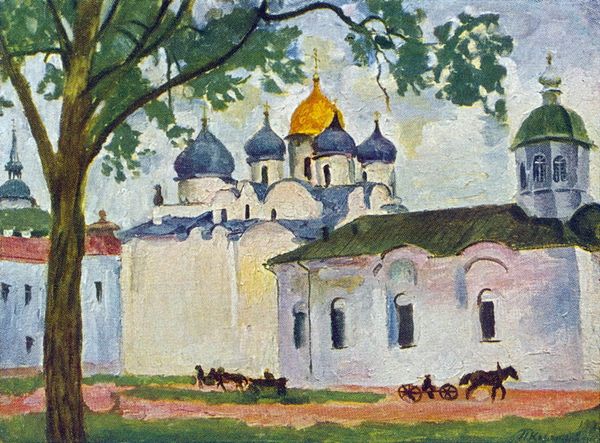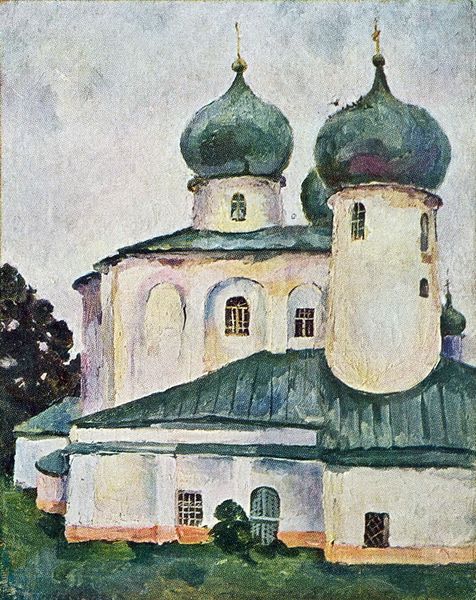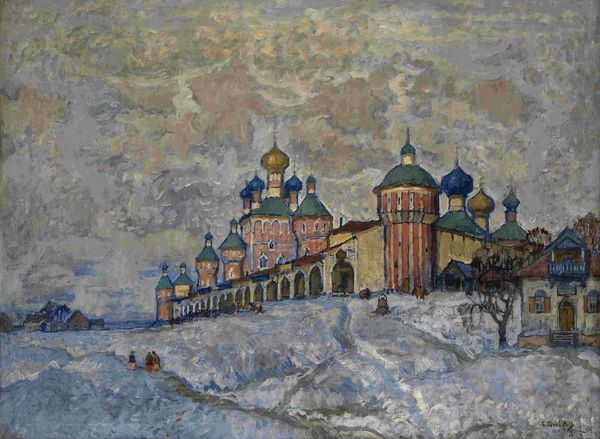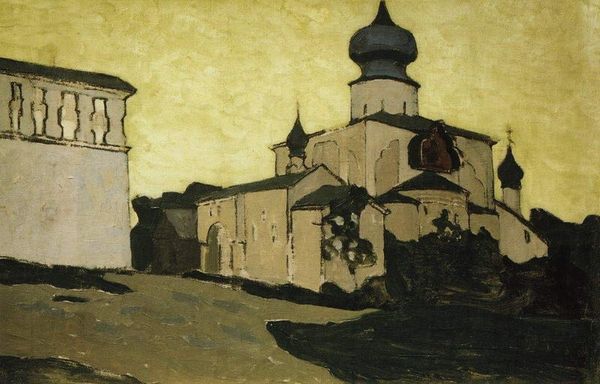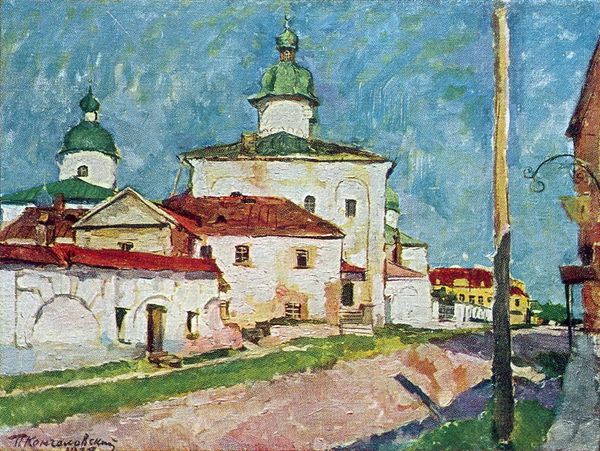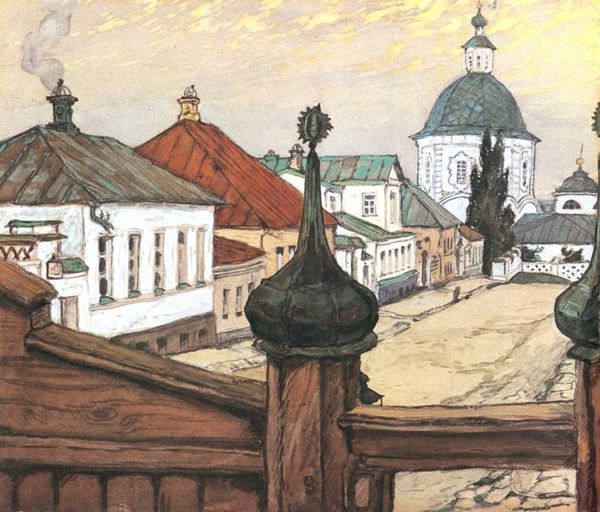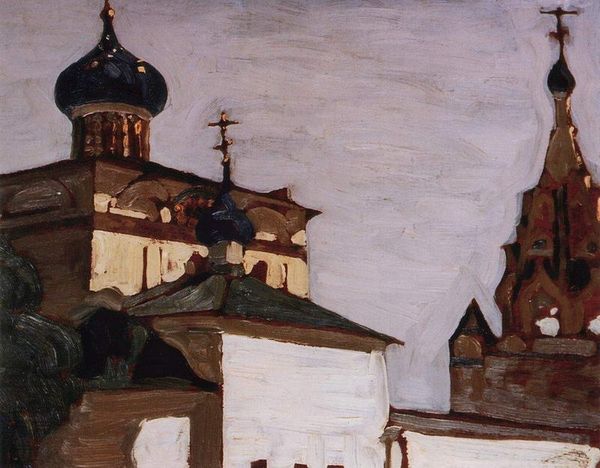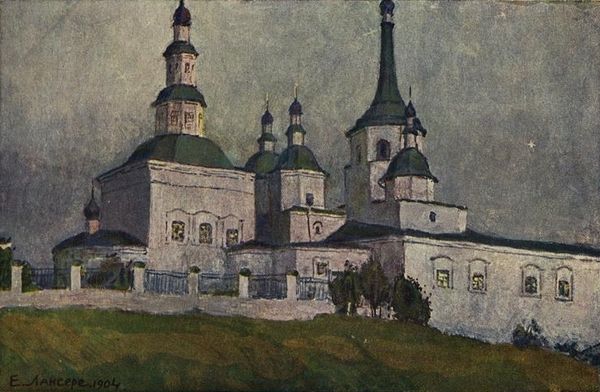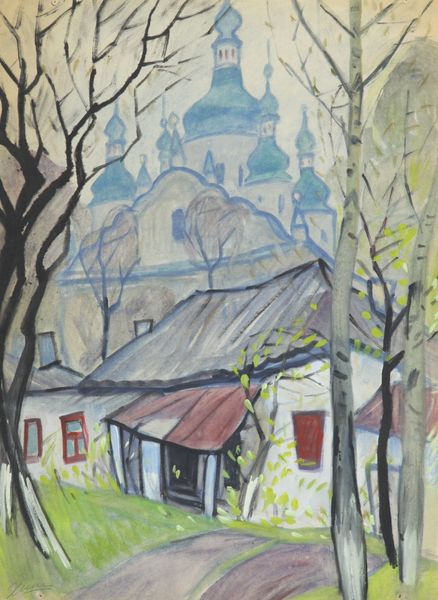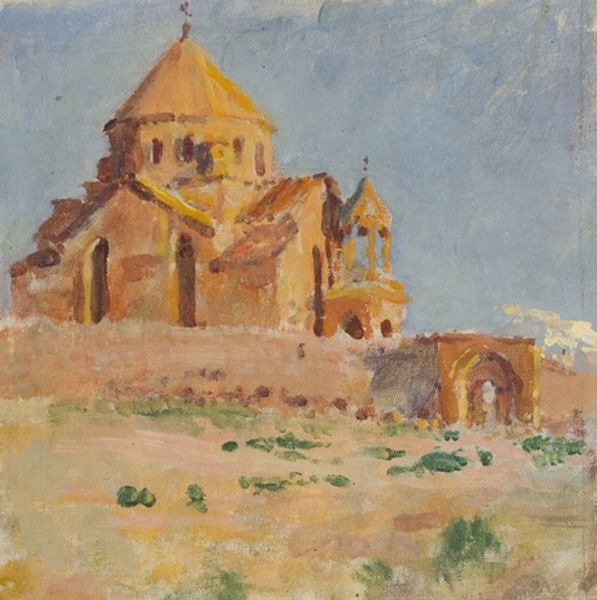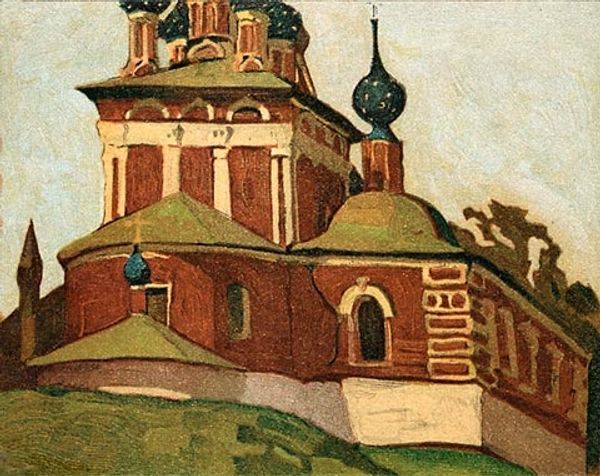
tempera, painting, oil-paint
#
tempera
#
painting
#
oil-paint
#
landscape
#
impressionist landscape
#
oil painting
#
russian-avant-garde
Copyright: Pyotr Konchalovsky,Fair Use
Editor: So here we have Pyotr Konchalovsky's "Cathedral of St. George in Novgorod," done with tempera and oil paint. I'm really struck by how solid everything feels. What jumps out to you? Curator: The facture. Look closely at Konchalovsky’s brushwork, the very deliberate layering of paint. This isn't just about depicting a cathedral, it's about *making* an image of a cathedral through specific processes. He wasn't aiming for pure representation, but to present the materiality of paint itself, and the labor involved. Editor: I see what you mean! The brushstrokes are really visible, it almost looks rough in places. Curator: Exactly. Consider the social context. This work emerges from a period of radical social change in Russia, where artists questioned traditional artistic values. This deliberate emphasis on the physicality of the medium – the *what* and the *how* over the *what* – rejects earlier artistic concerns with illusionism or romantic ideals, in favor of tangible and visible realities. What does this suggest to you? Editor: Maybe a focus on the everyday? Like, valuing labor and materials the way you might value the church itself? Curator: Precisely! Think about how cathedrals themselves are built – immense projects of human labor, using stone and metal. Konchalovsky, in a way, is mirroring that act of creation, isn't he? Do you see this reflected anywhere else? Editor: Yes! Even the textures, mimicking the materials of a landscape. I see a new depth now. Curator: A simple church becomes a vehicle for exploring the very act of artistic creation. Considering art through the lens of production reveals so much more than mere aesthetics, don’t you think? Editor: Definitely. I'll never look at a landscape the same way again! Thanks for making it click.
Comments
No comments
Be the first to comment and join the conversation on the ultimate creative platform.
